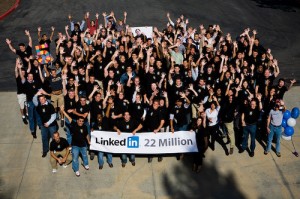With all of the information out there about social media, it is tough to know what to pay attention to and what to take with a grain of salt. Yet even with all of this information, we all still make our fair share of mistakes when executing our social media marketing campaigns.

As an owner of a social media marketing firm, everyday I speak with people who are trying to make the most out of their Facebook and LinkedIn profile, or making their “tweets” count on Twitter. The following are a few of the most common mistakes that I have seen companies make on social media and what we can do to combat them in the future.
Mistake #1: Lack of Research on the Platform
This is a very important one. With all of the hype around social media (and also due to the fact that creating accounts is free and easy), many of us are eager to just jump in head first. Keep in mind that social media is a branding and visibilty platform and thus needs to carry the right messaging and voice. Before you go full speed ahead, first see what you are getting yourself into.
I suggest creating a sparse profile and taking the time to look through each site. Where is your target market? What is your competition doing right (which can really help you come up with a strategy)? What applications can be useful? How are people communicating? What tools to I have to communicate with my market? While Facebook, LinkedIn and Twitter can work to everyone’s advantage, if you only have time to manage one or two presences, it is best to be able to pinpoint the right ones and save yourself time and effort.
Top tip: a great way of seeing what sites suit your business is by asking your existing audience via polling.
Mistake #2: Lack of Focus
When you execute an advertising campaign, you know who you are targeting. When you do a public relations campaign, you know what market you are trying to reach out to. When you do an email marketing campaign….well, you get the point. Social media is no different.
Social media allows us to target with laser focus, you just need to identify who you are trying to reach. Once identified, the key is to connect with “meaningful people” not just random people to get “the numbers.” Come on, why connect with 10,000 people who don’t care about you? What good does that do? Find connect and engage with people that matter. Focus!
Mistake #3: Lack of Consistency
If you are going to do social media, make sure to do it on a consistent basis – not whenever you can grab a free second. By consistent I mean daily, weekly, bi-weekly…on some sort of schedule. Since you are growing your audience, you need to be in front of them gaining that visibility and credibility consistently. My tip? Create a schedule of when you will be executing social media and what messages you will be highlighting. It takes a few minutes, but can save hours of weekly work.
No time to even make a plan? Outsource! It’s not a dirty word anymore.
Mistake #4: Using a 100% Push Marketing Approach
Push marketing is used all of the time in traditional marketing. While it is a perfect fit in many instances, it is not the foundation of an engaging social media strategy. Push marketing literally “pushes” what you want from your audience directly on top of them, while “pull” marketing using social media is about starting a conversation, engaging, enchanting and much more. My suggestion is to use a 90% pull and a 10% push marketing equation. This is something that I have used and it works a treat. This way you can grow your audience and create value before offering up a special discount. If they believe you to be credible through your pull approach, when you incorporate the push elements you will have higher levels of success.
Mistake #5: Wrong Goals
Truly look at what you are trying to achieve, and “more sales” is not enough. Social media has many outcomes, so it is smart to have a broader scope. Think in terms of hits to your website, newsletter signups, ebook/book sales/downloads….this is the way to go!
Mistake #6: Lack of Planning
Again, I am going back to the importance of a plan: without a plan, you plan to fail. Although we know this cliche all too well, there is definitely truth to it. Why? Because a strategic plan saves you time and money – two things that we all can use, right?
Sit down and figure out your marketing strategy and then layer your social media strategy on-top. Social media can support and enhance everything you do, you just have to keep the two connected. Without the connection, you are wasting the power of cross marketing and branding. Flying blindly in a new marketing medium could not only be risky for your reputation, but also cause you more trouble than you can handle.
—-
I hope that these mistakes are ones that you have not made and if you have, you will no longer make. It is important for us to all to take a close look at our plans and strategies in order to see how strong and effective they can be. Without strategy or planning, a social media marketing campaign takes a lot more time and a lot more effort to execute.
 Christ Tompkins is the founder of Go! Media International, an online marketing company, who’s team focuses on building successful social media marketing strategies for its clients. Chris has spoken at many national and international events recently sharing the dais with heads of Google and YouTube. You can follow Chris on Twitter or Facebook
Christ Tompkins is the founder of Go! Media International, an online marketing company, who’s team focuses on building successful social media marketing strategies for its clients. Chris has spoken at many national and international events recently sharing the dais with heads of Google and YouTube. You can follow Chris on Twitter or Facebook










Recent Comments